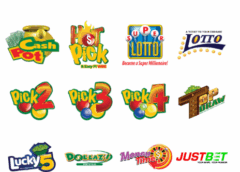Thomas Jefferson, the third U.S. president, called slavery “an abominable crime,” but was a slaveholder himself. During his lifetime he owned more than 600 slaves, who worked on his Virginia plantations, including Monticello. Isaac Granger Jefferson, shown here, was the son of Monticello’s blacksmith and overseer. He was also a blacksmith.

The complex estate operations required many laborers with various skills. A new exhibition, mounted by the Smithsonian’s National Museum of African American History and Culture, examines Jefferson’s dilemma and the lives of six Monticello slave families. The exhibition, Slavery at Jefferson’s Monticello: Paradox of Liberty, features the Fossetts, Grangers, Gillettes, Hemingses, Herns and Hubbards, along with their personal artifacts: tools, games, toothbrushes, crockery and other utensils.
Jefferson allowed some slaves to earn a percentage of profits for products, and he bought vegetables they grew. He also helped educate trusted servants such as the Hemingses. Based on DNA evidence, some historians believe Jefferson fathered Sally Hemings’ children.
The portable desk used by Jefferson to draft the Declaration of Independence and his detailed farm records are also in the exhibition.
Read more: http://iipdigital.usembassy.gov/st/english/inbrief/2012/02/201202091012.html#ixzz1mGjFX91Q
Author Profile
- ... author, qualified & experienced in journalism, creative writing, editing, the arts, art critique, paralegal, photography, teaching, research, event planning, motivational speaking, workshops for children and adults, visual arts etc. Click here for contact form. ...or email me here
Latest entries
 Raw and DirectJanuary 4, 2026Gambling in Jamaica
Raw and DirectJanuary 4, 2026Gambling in Jamaica Raw and DirectJanuary 1, 20262026 New Years Message from Anthea McGibbon
Raw and DirectJanuary 1, 20262026 New Years Message from Anthea McGibbon Raw and DirectDecember 28, 2025Jamaican street foods everybody loves
Raw and DirectDecember 28, 2025Jamaican street foods everybody loves AdvertorialDecember 27, 2025Legal Wiz Jamaica
AdvertorialDecember 27, 2025Legal Wiz Jamaica




